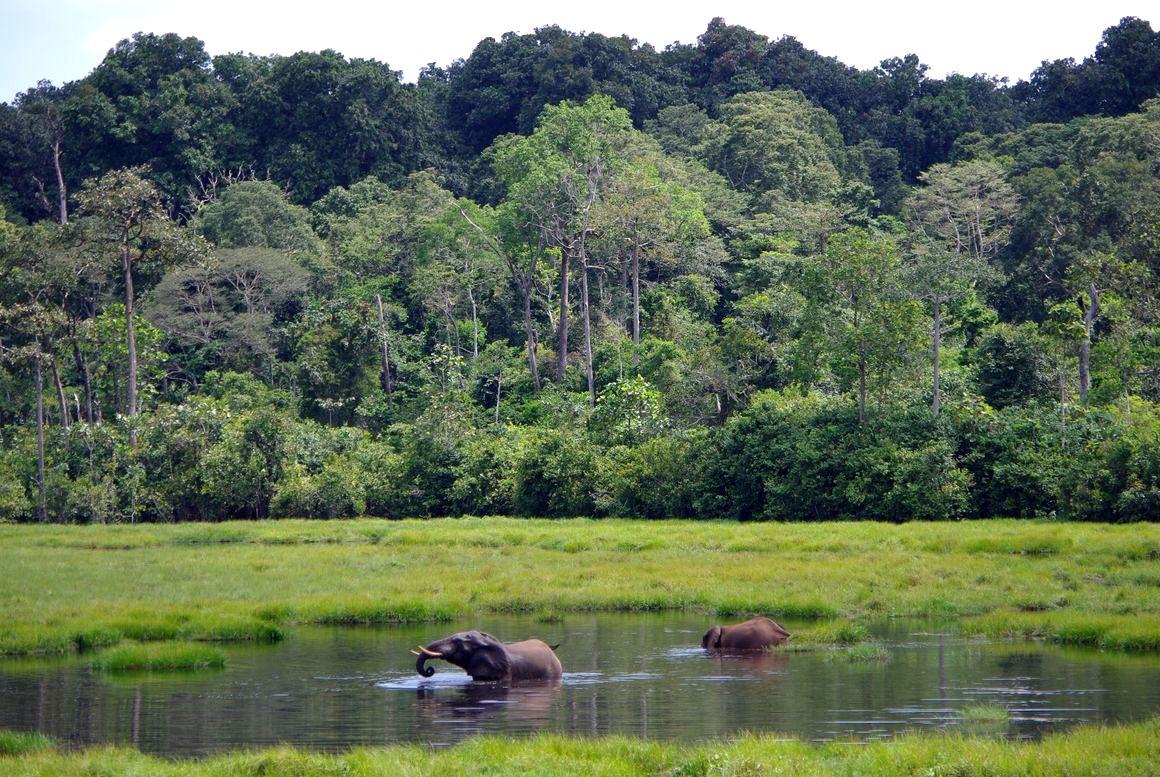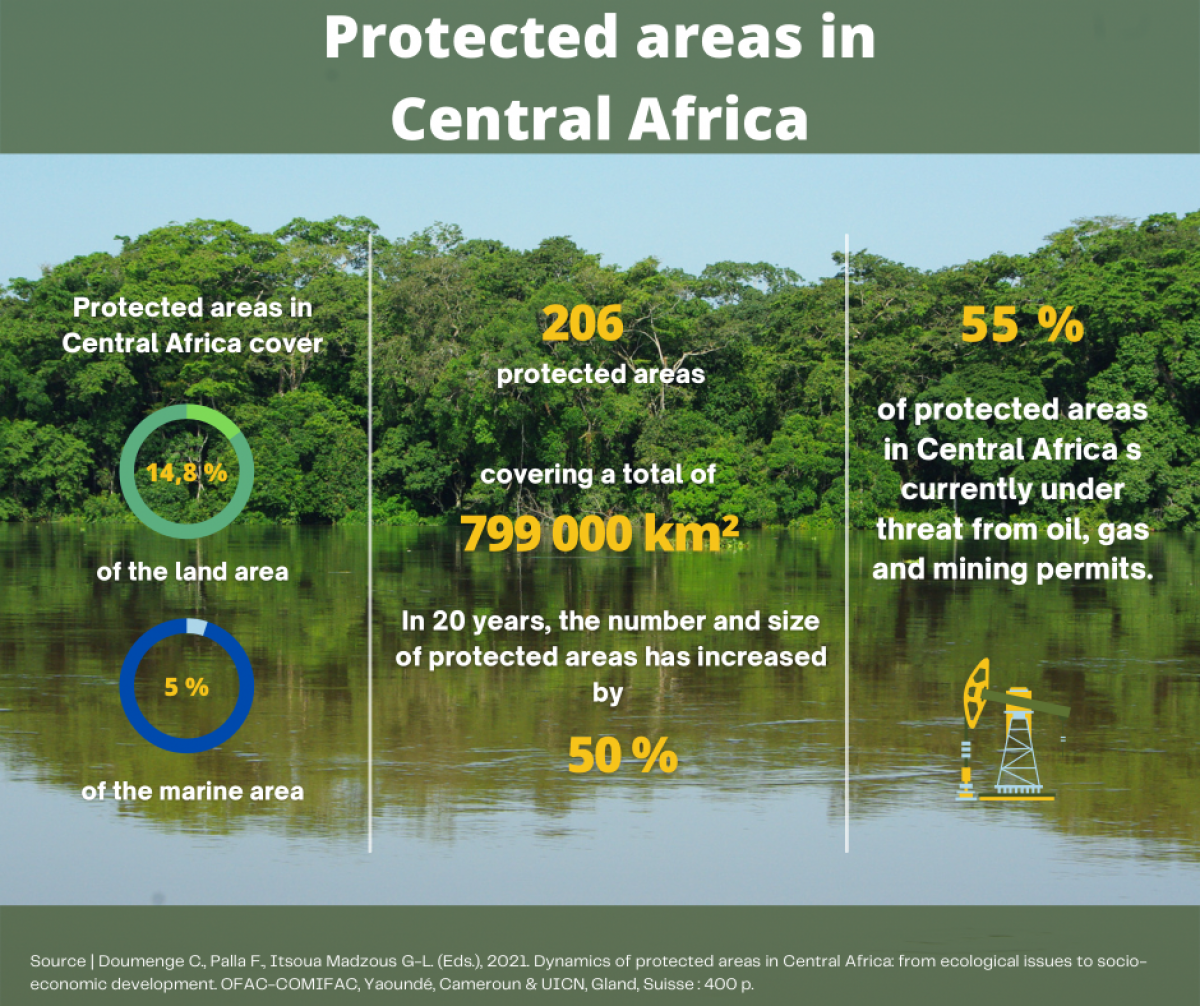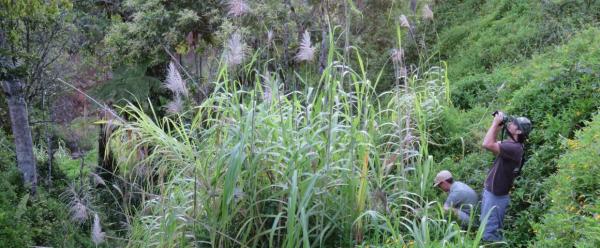Just out 27 October 2025
- Home
- Press area
- Press releases
- State of protected areas in Central Africa: 2020
Protected areas in Central Africa: a new report proposes avenues to improve their effectiveness

© C. Doumenge, CIRAD
On 29 June 2021, the Central Africa Forest Observatory (OFAC) presented an updated review of the state of protected areas in the 10 member countries of the Commission of Central African Forests (COMIFAC).
“The goal of this report is to help all Central African countries to better manage their protected areas, but especially to promote sub-regional cooperation on common and transboundary issues”, says Hervé Martial Maidou, Executive Secretary of COMIFAC. “It proposes a vision of partnerships between protected area managers, communities, governments and civil society, with the shared goal of improving conservation efforts and contributing to achieving global objectives on the protection of biological diversity”.
The goal of this report is to help all Central African countries to better manage their protected areas, but especially to promote sub-regional cooperation on common and transboundary issues.
Prepared by a group of experts specialising in conservation in Central Africa, with the financial support of the Organisation of African, Caribbean and Pacific States (OACPS) and the European Union (EU), through the BIOPAMA and RIOFAC projects, as well as GIZ, the “State of protected areas in Central Africa: 2020” report follows on from the first edition published in 2015, which has now become the flagship publication on protected areas in the region.
This 2020 edition, coordinated by three scientific editors from CIRAD and OFAC-COMIFAC, contains contributions from some 90 authors and contributors from Central Africa and elsewhere. It provides a harmonised picture of the network of protected areas across the whole region. The report clearly shows that the national and sub-regional networks have been greatly strengthened, but that they still face many challenges. Detailed analyses, aimed at informing policymakers and managers, thus explore several new issues: governance, ecotourism, human-elephant conflict, transhumance, mining and the oil industry. The report shows the importance of protected areas for the sustainable development of Central Africa: its goal is to contribute to a multi-sector dialogue and to improve the incorporation of these areas into country development strategies.
This publication will help to target the types of action and investment needed to improve the governance and management of protected areas.
“The year 2020 marked a decisive moment in the conservation of nature, as the world took stock of progress towards the Strategic Plan for Biodiversity 2011-2020 and negotiated the new Global Biodiversity Framework”, says Trevor Sandwith, Director of the Global Protected Areas Programme at the International Union for Conservation of Nature (IUCN). “This report makes a significant contribution to the analysis of the many factors that determine the success of protected areas in Central Africa, but also of the challenges that will need to be addressed in order to achieve the global objectives set. This publication will therefore help to target the types of action and investment needed to improve the governance and management of protected areas and to support their effectiveness as the basis of not only life on earth and under water, but also of the Sustainable Development Goals for our planet”.
The protected areas of Central Africa cover 15% of the land area and 5% of the marine area of the region, which shows significant progress towards achieving the Aichi Targets – set at 17% for land areas and 10% for marine areas – adopted by the member countries of the Convention on Biological Diversity in 2010. "Currently, 70% of mangroves, 20% of rainforests and 15% of savannahs and semi-dry forests are protected", explains Charles Doumenge, a researcher at CIRAD and chief scientific editor of the report.
Central African countries have almost reached the Aichi Targets and are now moving towards the post-2020 targets, which call for 30% land protection.
However, the management of these areas still needs to be improved. Indeed, several factors, including the lack of human and financial resources, the limited participation of local people, and the scarcity of data on the areas to be monitored as a priority, all require special attention in future action.
In nine chapters, the “State of protected areas in Central Africa: 2020” report examines the main challenges facing the region. The launch of the report on 29 June 2021 is the opportunity to take stock of two of these issues: the governance of protected areas and relations with the extractive industries.
Better integrating local populations into the management of protected areas in Central Africa
Increasing the role of communities in the management of protected areas is the main recommendation made by the authors of the chapter on governance. Systems that include local communities are the ones that yield the best results in terms of the conservation of natural resources and the well-being of local populations.
IUCN currently recognises four types of governance of protected areas:
- Public: management is entirely the responsibility of the government;
- Shared: management is shared between public and private entities (for example, through public-private partnerships);
- Private: governance is provided by private entities;
- Community: local communities manage the protected areas themselves.
In Central Africa, 85% of protected areas currently have a public governance system. Shared governance accounts for around 14% of management systems, and the remaining 1% includes the few cases of entirely private or community governance. In the case of shared governance, management is typically organised with private non-profit organisations such as NGOs, through public-private partnerships and, more rarely, with communities.
According to Patrice Bigombe Logo, Director of the Centre for Research and Action for Sustainable Development (CERAD), these emerging management methods have many benefits: “There are currently a number of contracts that delegate the management of protected areas via public-private partnerships. We see that this type of partnership rapidly improves the management of protected areas, thanks to regular financial and human support. Moreover, this system makes it easy to include local populations, through consultation, decision-making or job creation”.
Other recommendations concern in particular:
- Legislation: the legal framework for the governance of protected areas dates back to the colonial period. The authors call for new adapted, operational and coherent legislation.
- Regional cooperation: given that many protected areas are transboundary, a reform of the regional institutional coordination of the network of protected areas in Central Africa appears necessary.
- Support for stakeholders: current projects providing technical, material, financial and human support are often restricted to a maximum of five years. The authors call for medium-term support, planned for a minimum of 10 years.
Reconciling biodiversity protection and development: improving relations with the extractive industries
“In Central Africa, around half of the network of protected areas is currently under threat from oil and gas permits”, says Georges Belmond Tchoumba, Regional Coordinator of the WWF Central Africa Forest Programme. “This percentage increases to 60% if we include the mining industry. Permits have already been granted in 27% of protected areas”.
The extractive industries are an economically powerful sector. The protected areas thus face an asymmetry of resources and investments, and are at a disadvantage during discussions on economic development policies.
“This ignores the importance of biodiversity for sustainable development”, says Charles Doumenge, a researcher at CIRAD and chief scientific editor of the report. “We know, for example, that maintaining good forest cover helps to improve soil fertility and to increase rainfall, which ensures protection for the agricultural sector and therefore food security for the region”.
Rather than placing conservation and development in opposition, the authors thus propose improving management of the impacts of the extractive industries: banning them from certain biodiversity-rich areas, and allowing them in other areas according to strict conditions guided by environmental impact studies.
“The goal of the 2020 report on protected areas in Central Africa is to show that biodiversity protection and socio-economic development are intrinsically linked”, says Florence Palla, Regional Coordinator of the RIOFAC project and scientific co-editor of the report. “In the context of sustainable development, the protected areas are an integral part of productive systems, provided local populations are involved in their management”.
In the context of sustainable development, the protected areas are an integral part of productive systems, provided local populations are involved in their management.
Reference
Doumenge C., Palla F., Itsoua Madzous G-L. (Eds.), 2021. State of protected areas in central Africa 2020. OFAC-COMIFAC, Yaoundé, Cameroun & UICN, Gland, Suisse : 400 p.
About the institutional editors
OFAC
The Central Africa Forest Observatory (OFAC) was created in 2007 as a specialised unit of the Central African Forests Commission (Commission des forêts d'Afrique centrale COMIFAC) to provide the up-to-date, relevant data on the region’s forests and ecosystems that is needed for policy-making and to promote better governance and sustainable management of natural resources. OFAC is supported by the EU-funded RIOFAC project.
IUCN
IUCN is a membership Union composed of both government and civil society organisations. It harnesses the experience, resources and reach of its more than 1,400 Member organisations and the input of more than 18,000 experts. IUCN is the global authority on the status of the natural world and the measures needed to safeguard it.




























